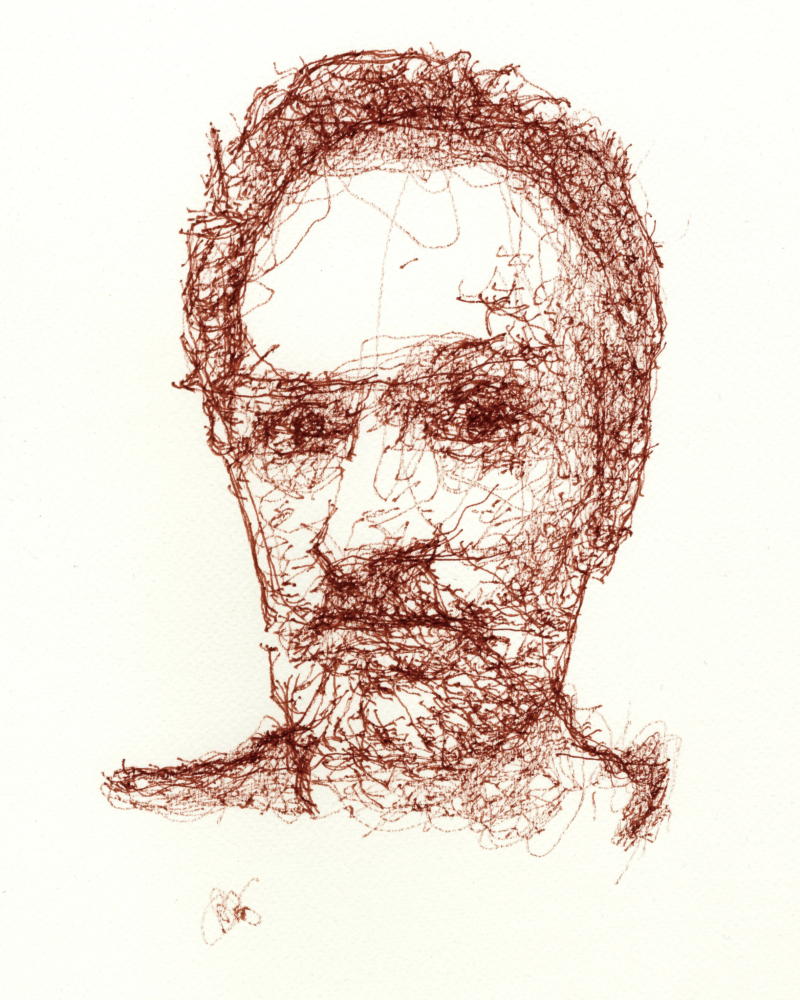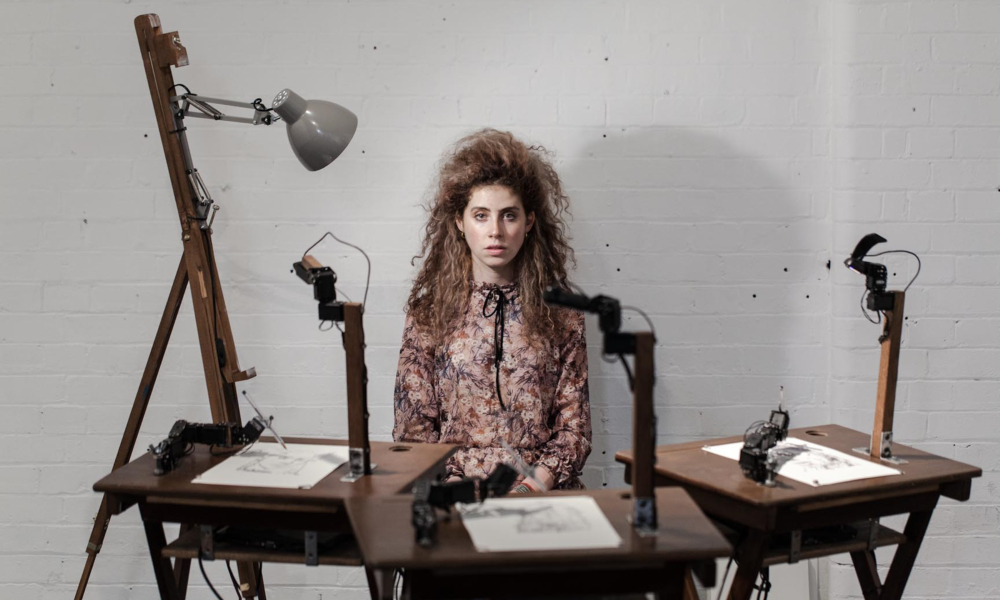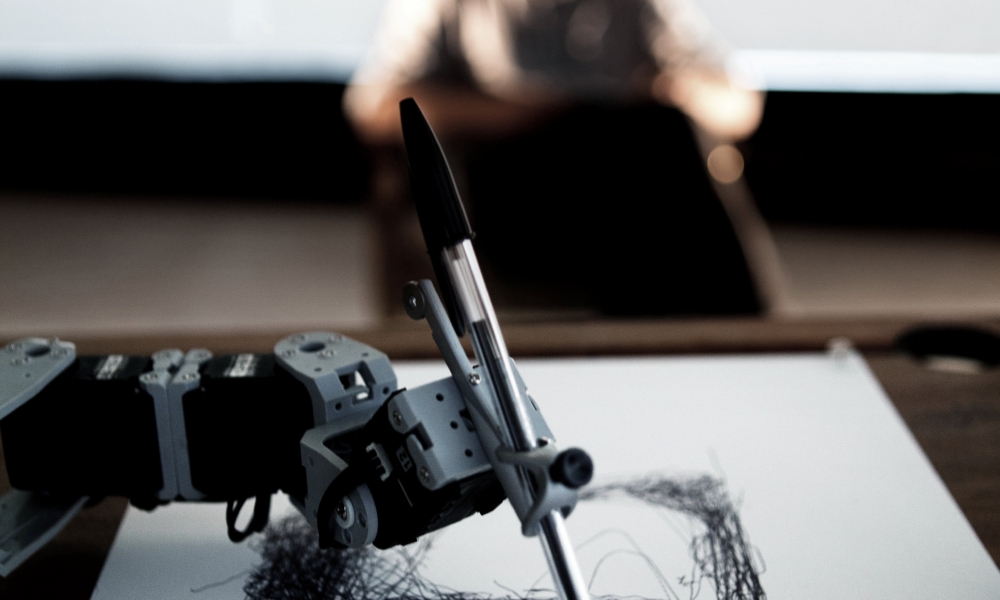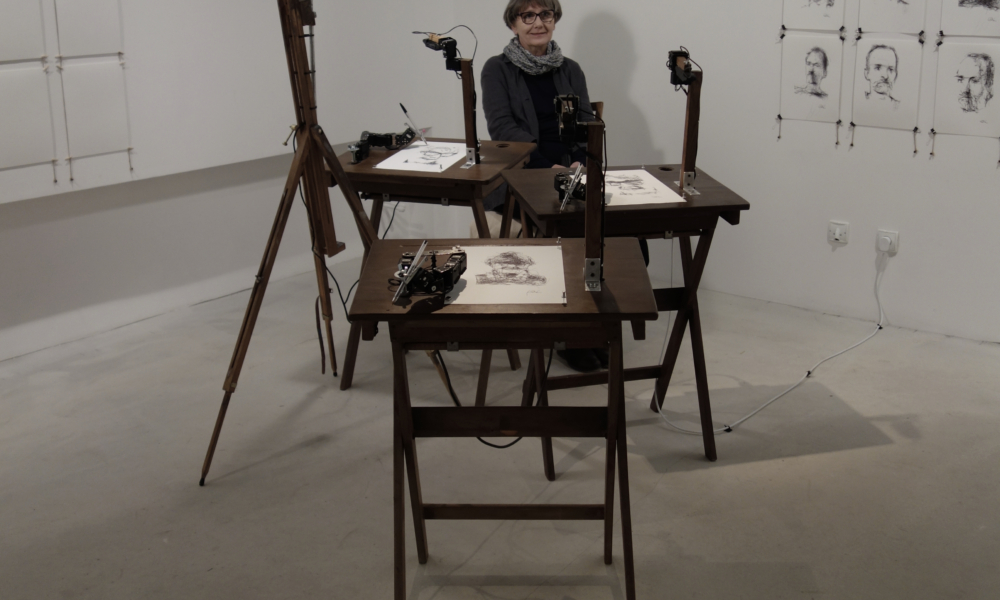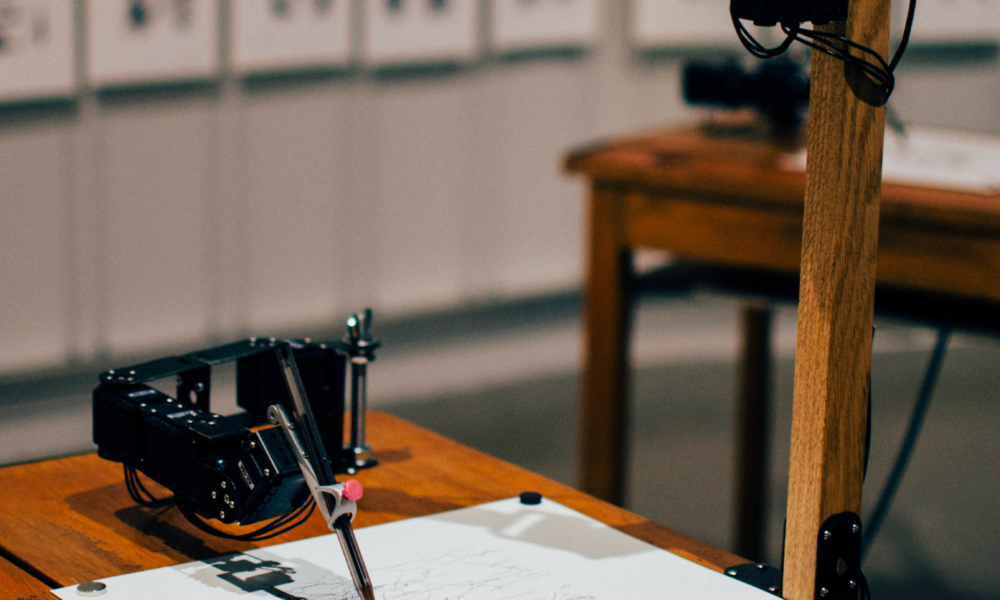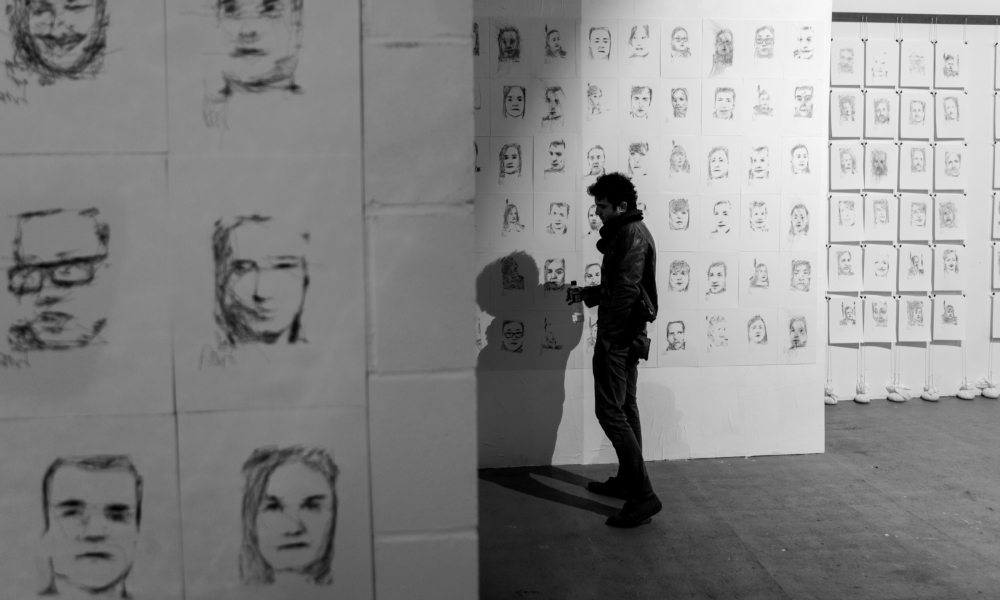Performative installation, various dimension, 2012-2022
HUMAN STUDY#1, 3 RNP
Patrick Tresset (FR/BE)
Human Study #1 is an installation where the human becomes an actor. In a scene reminiscent of a life drawing class, the human takes the sitter’s role to be sketched by several robots. When the subject arrives to the appointment, they are seated in an armchair. An assistant attaches sheets of paper on to the robots’ desks and wakes each one up, by twisting its arm or knocking three times.
The robots, stylised minimal artists, are only capable of drawing obsessively. Their bodies are old school desks on which the drawing paper is pinned. Their left arms, bolted on the table, hold black Bic biros, are only able to draw. The RNP robots all look alike except for their eyes, either obsolete digital cameras, or low-resolution webcams. Their eyes focus on the subject or look at the drawing in progress. The drawing sessions last up to 15 minutes, during which time the human cannot see the drawings in progress. The sitter only sees the robots alternating between observing and drawing, sometimes pausing. The sounds produced by each robot’s motors create an improvised soundtrack. The sitter is in an ambivalent position: at the mercy of the robots’ scrutiny, but also as an object of artistic attention. As the model in a life drawing class, the human is without personality, a mere object of study. The human sitter is passive, the robots taking on what is perceived as the artistic role. Although motionless, the model is active in keeping the pose: for the spectators, the sitter is an integral part of the installation.
The RNP was originally developed by Patrick Tresset to overcome a debilitating painter’s block. It could be seen as a creative prosthesis or a behavioural self-portrait. Even if the way Paul the robot way of drawing is based on Tresset’s technique, its style is not a pastiche of Tresset’s, rather an interpretation influenced by the robot’s characteristics.
5RNP (the larger version of the installation) was premiered at the Merge festival in association with Tate Modern in London in 2012. It has since been exhibited at the Museum of Modern and Contemporary Arts (Seoul), at Ars Electronica 2014 (Linz), BOZAR (Brussels), Variation (Paris), BIAN (Montreal), Mori Museum (Tokyo) and at Update_5 (Ghent), where it was awarded the Prix du Public and 3rd Prix du Jury.
Performative installation, various sizes, 2012-2022
Patrick Tresset
Patrick Tresset is a Brussels-based artist who, in his work, explores human traits and aspects of human experience. His work reflects recurrent ideas such as embodiment, passing time/spending time, childhood, conformism, obsessiveness, nervousness, the need for storytelling, and leaving a mark. He is best known for his performative installations using robotic agents as stylised actors that leave marks and for his exploration of the drawing practice using computational systems and robots.
In his late 30s, after being a painter for 15 years, he attended Goldsmiths College, London, for a master’s degree and then an MPhil in arts and computational technologies. Aside from his artistic practice, in 2013, he was a senior visiting research fellow at Konstanz University and is currently an adjunct assistant professor at the University of Canberra. His past research work is referenced in more than a hundred academic publications in various fields (computational graphics, drawing, psychology, AI, robotics).
Since 2011, his work has been exhibited in solo and group shows, including in association with major museums such as The Pompidou Center (Paris), Prada Foundation (Milan), Tate Modern (London), V&A (London), MMCA (Seoul), The Grand Palais (Paris), BOZAR (Brussels), TAM (Beijing), Mcam (Shanghai), Mori Museum (Tokyo). In 2015 a monograph with seven essays, Human Traits and the Art of Creative Machines, about Patrick’s work was published by the Centre for Contemporary Art Laznia, edited by Ryszard W. Kluszczyńs. His drawings are in many small private collections and in more significant ones, including the V&A (London), Guerlain Foundation (Paris), McaM (Shanghai) and Maison d’ailleurs (Yverdon). His installations have been awarded prizes and distinctions (Lumens, Ars Electronica, NTAA, Japan Media festival). His works have featured in numerous media outlets, including: Art press, Art review, Beaux arts, Frieze, Arte, Form, Wired, Vice, BBC, DeWelle, Le Monde, New York Times.
